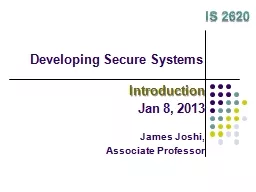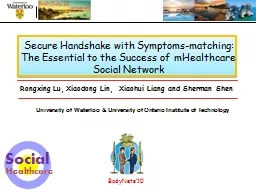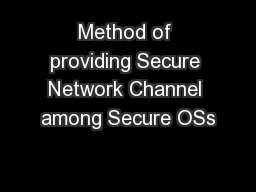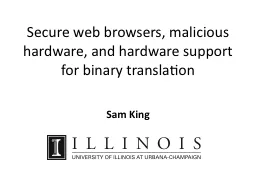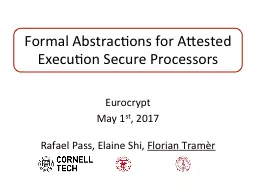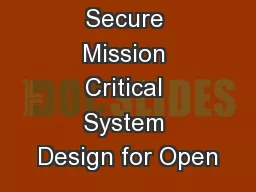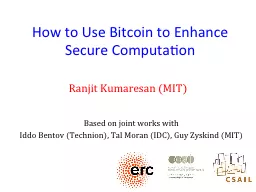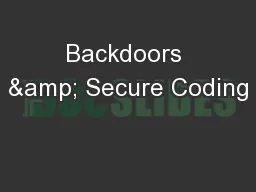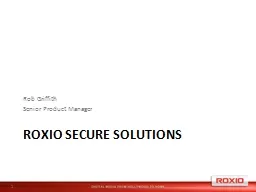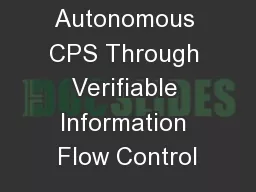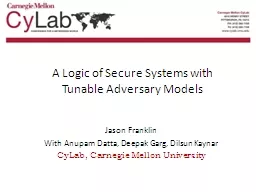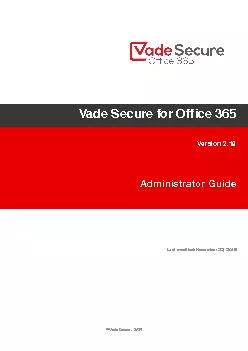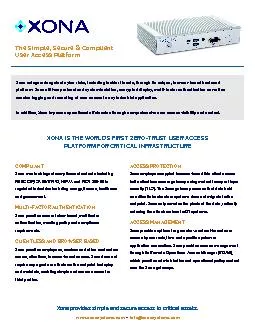PPT-Developing Secure Systems
Author : min-jolicoeur | Published Date : 2017-04-23
Introduction Jan 8 2013 IS 2620 James Joshi Associate Professor Contact James Joshi 706A IS Building Phone 4126249982 Email jjoshimailsispittedu Web httpwwwsispittedujjoshicoursesIS2620Spring13
Presentation Embed Code
Download Presentation
Download Presentation The PPT/PDF document "Developing Secure Systems" is the property of its rightful owner. Permission is granted to download and print the materials on this website for personal, non-commercial use only, and to display it on your personal computer provided you do not modify the materials and that you retain all copyright notices contained in the materials. By downloading content from our website, you accept the terms of this agreement.
Developing Secure Systems: Transcript
Download Rules Of Document
"Developing Secure Systems"The content belongs to its owner. You may download and print it for personal use, without modification, and keep all copyright notices. By downloading, you agree to these terms.
Related Documents

